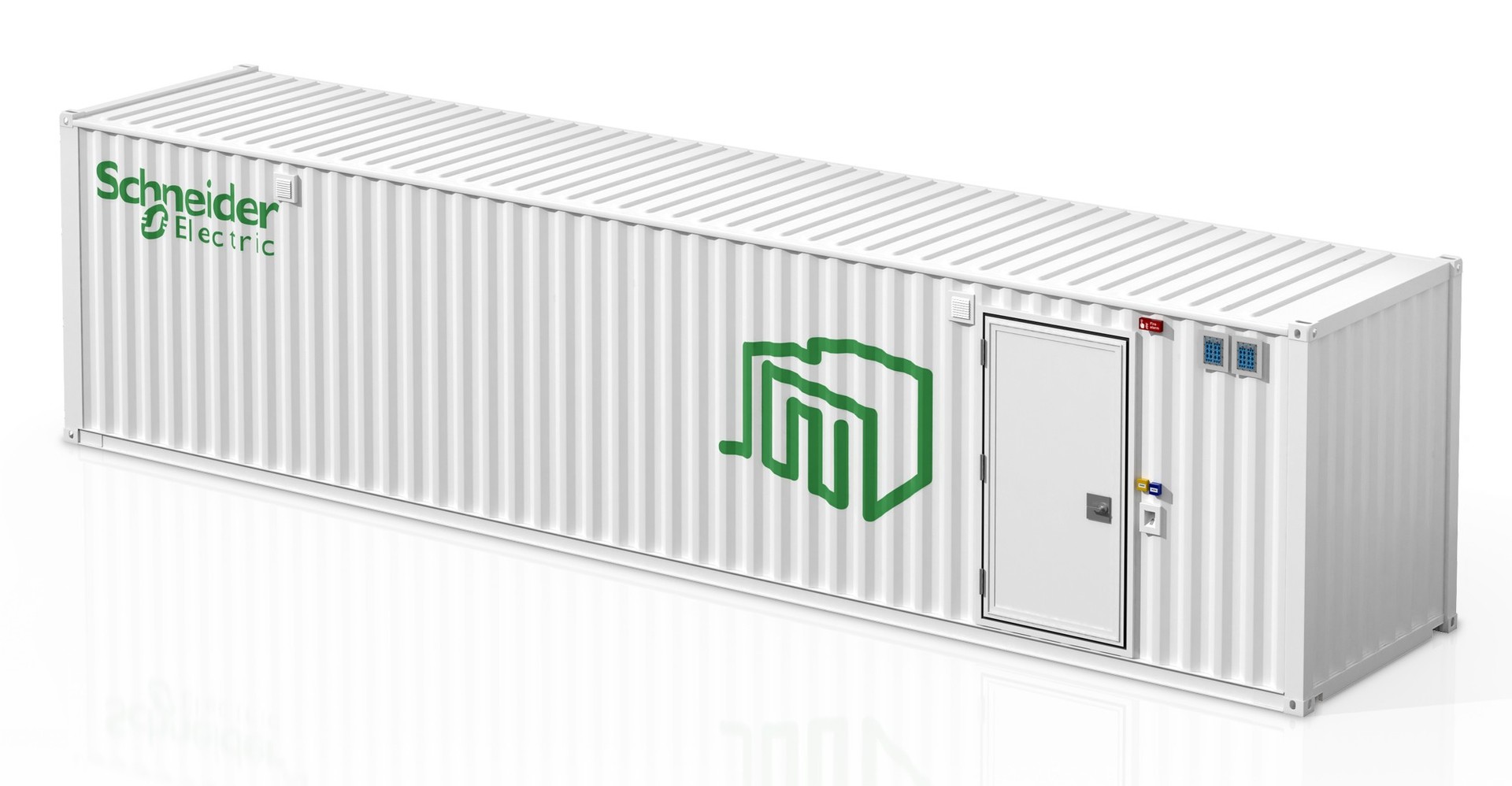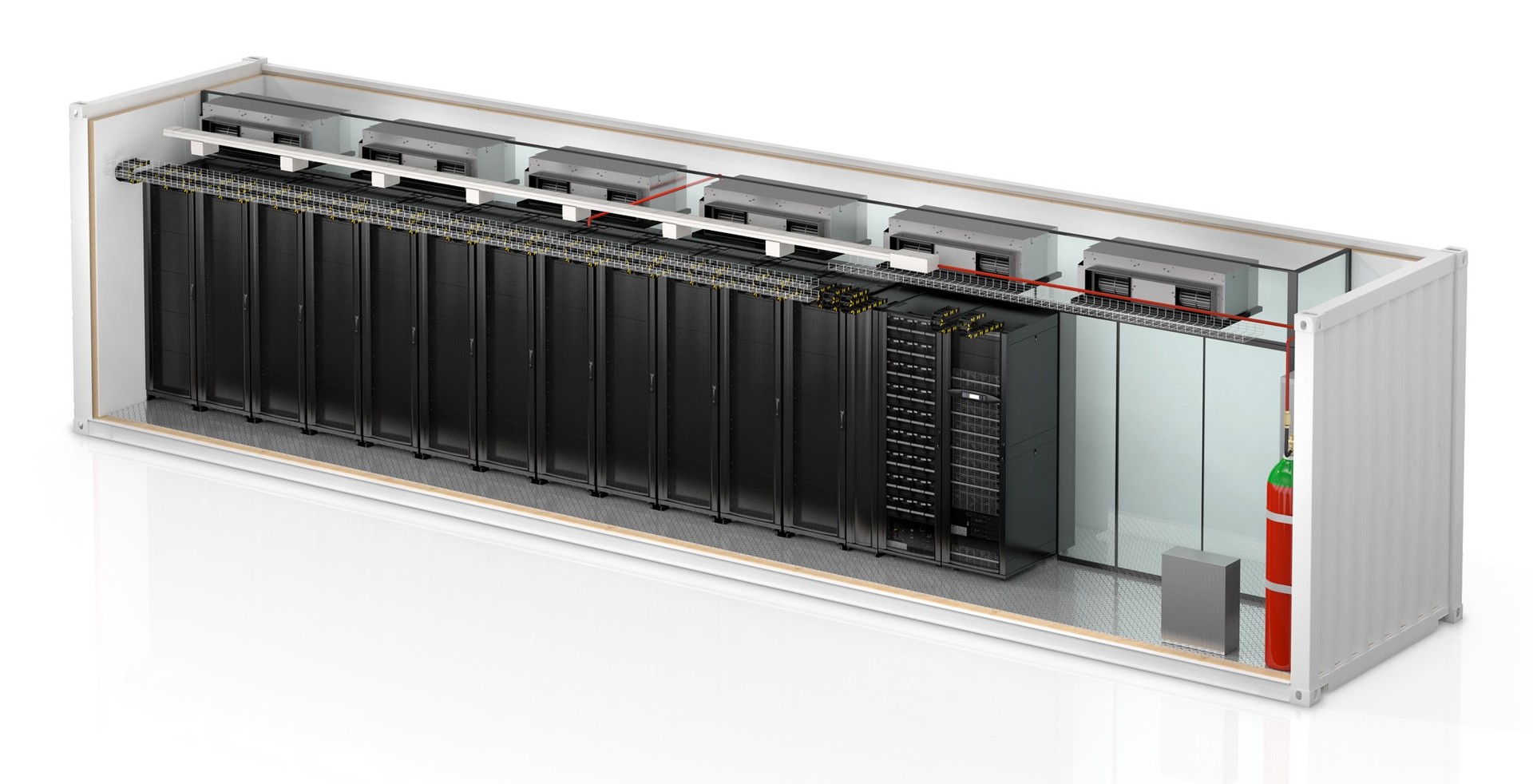Infrastructure in a box: Schneider Electric container data centers
In the light of current trends in the introduction of all new products and services, both physical and virtual, the main difficulties in this process are associated with the complexity of changing and adapting the physical infrastructure of data centers. One possible solution to these problems is to use container data centers.

The main current trends are the widespread acceleration of all aspects of business activity and, at times, their unthinkable translation into the virtual digital world. These aspects include all the accelerating launch of new products on the market; these can be either real products or devices, or virtual services. In addition to innovations, enterprises may undergo various kinds of reorganization or even a change in the way they conduct business.
The effectiveness of these transformations depends on the ability to transform all components of the enterprise. One of these components is the physical infrastructure of the data processing center (DPC) of the enterprise. Traditionally, the physical infrastructure of the data center is the most difficult to change or adaptable part, since it is inextricably linked with architectural structures. Thus, for example, to increase the number of IT equipment will inevitably require the installation of additional air conditioners, uninterruptible power supplies, etc. Project surveys, in such a case, may take a long time and as a result, they will result in the inability to carry out the required changes. In addition to the natural expansion of the data center, modern technologies may require a serious reorganization of the way of doing electronic business. One of these phenomena is the trend of development, the so-called “edge computing” (Edge Computing). The trend is due to the need to move the access point to services closer to the consumer services. Such access points to services do not require large computational capacities; they should be able to be organized with minimal time and cost.
The answer to the challenges of the modern transforming digital world to the physical infrastructure of the data center are container data centers. Container data center is a solution in which the physical infrastructure of a data center is built in a structure based on a conventional shipping container. The choice of container format due to its transport purpose. Such a data center is manufactured at the factory and delivered to the customer completely ready for operation. This simplifies transportation and significantly reduces commissioning time. In addition to speeding up the delivery and launch of a data center, container solutions can significantly reduce or even reduce to zero design time. Container data center is designed for operation in open space, does not require any space or protective structures. In fact, the container solution can be implemented on any open site, office parking or lawn.
')

Schneider Electric, as the market leader in the physical infrastructure of the data center, with extensive experience in building physical infrastructure and a significant installed base of container solutions, has a number of ready-made solutions that do not require modification. That is, it is enough for the customer to choose the typical system that suits him according to the characteristics and as soon as possible the factory starts assembling such a solution. In the case of non-standard requirements, changes are made to existing projects that do not require significant time.
One of the main criteria for choosing a container solution is the power of the IT load and the number of cabinets for its placement. In cases where the physical infrastructure can be placed within a single container with standard dimensions, an All-In-One solution is used. If a more ambitious solution is required, then separate subsystems of the physical infrastructure are placed in container constructions and the selection consists in choosing a cooling module (Cooling Module), a power supply module (Power Module) and a module for load placement (IT-Module).

The most popular solutions today are the all-in-one solutions provided by Schneider-electric in the SmartShelter Container product line.

SmartShelter Container Solutions
For the most popular configurations, a sufficiently large list of possible options is available, such as replacing a UPS with a customer’s request, embedding an automatic reserve transfer unit (ATS) into the input system, supplying monitoring software, etc.
The scope of container data centers is very extensive and it is even wider than the capabilities of traditional physical infrastructure. One example is the container solution for the most famous “building of the century” - the Sagrada Familia in Barcelona. The construction of the cathedral continues to this day according to the drawings of Antonio Gaudi, which do not provide for the availability of a data center due to a secular time gap. The implemented solution, which fit in a double 6-foot container, does not take place and does not spoil the tourist species, performing all the necessary functions. The project is a completely different scale is the American colloquy site Keystone NAP in Pennsylvania. The energy potential of the site is 2040 MW. In this case, the customer’s placement element is a container developed jointly by Keystone NAP and Schneider electric and called KeyBlock. The advantages of the container solution in the project are that the new container is delivered to the site within 12 weeks from the date of the order, which is almost impossible with a stationary solution. Also, container solutions are finding their use for remote sites in exploration and gas / oil production, where computing power is needed temporarily. Naturally, such solutions are also used for military needs, since the container is easily transported and masked.
In addition to the comprehensive technical offer, the container solution is also provided with a comprehensive service and warranty service for all components from Schneider Electric.

The main current trends are the widespread acceleration of all aspects of business activity and, at times, their unthinkable translation into the virtual digital world. These aspects include all the accelerating launch of new products on the market; these can be either real products or devices, or virtual services. In addition to innovations, enterprises may undergo various kinds of reorganization or even a change in the way they conduct business.
The effectiveness of these transformations depends on the ability to transform all components of the enterprise. One of these components is the physical infrastructure of the data processing center (DPC) of the enterprise. Traditionally, the physical infrastructure of the data center is the most difficult to change or adaptable part, since it is inextricably linked with architectural structures. Thus, for example, to increase the number of IT equipment will inevitably require the installation of additional air conditioners, uninterruptible power supplies, etc. Project surveys, in such a case, may take a long time and as a result, they will result in the inability to carry out the required changes. In addition to the natural expansion of the data center, modern technologies may require a serious reorganization of the way of doing electronic business. One of these phenomena is the trend of development, the so-called “edge computing” (Edge Computing). The trend is due to the need to move the access point to services closer to the consumer services. Such access points to services do not require large computational capacities; they should be able to be organized with minimal time and cost.
The answer to the challenges of the modern transforming digital world to the physical infrastructure of the data center are container data centers. Container data center is a solution in which the physical infrastructure of a data center is built in a structure based on a conventional shipping container. The choice of container format due to its transport purpose. Such a data center is manufactured at the factory and delivered to the customer completely ready for operation. This simplifies transportation and significantly reduces commissioning time. In addition to speeding up the delivery and launch of a data center, container solutions can significantly reduce or even reduce to zero design time. Container data center is designed for operation in open space, does not require any space or protective structures. In fact, the container solution can be implemented on any open site, office parking or lawn.
')

Schneider Electric, as the market leader in the physical infrastructure of the data center, with extensive experience in building physical infrastructure and a significant installed base of container solutions, has a number of ready-made solutions that do not require modification. That is, it is enough for the customer to choose the typical system that suits him according to the characteristics and as soon as possible the factory starts assembling such a solution. In the case of non-standard requirements, changes are made to existing projects that do not require significant time.
One of the main criteria for choosing a container solution is the power of the IT load and the number of cabinets for its placement. In cases where the physical infrastructure can be placed within a single container with standard dimensions, an All-In-One solution is used. If a more ambitious solution is required, then separate subsystems of the physical infrastructure are placed in container constructions and the selection consists in choosing a cooling module (Cooling Module), a power supply module (Power Module) and a module for load placement (IT-Module).

The most popular solutions today are the all-in-one solutions provided by Schneider-electric in the SmartShelter Container product line.

SmartShelter Container Solutions
For the most popular configurations, a sufficiently large list of possible options is available, such as replacing a UPS with a customer’s request, embedding an automatic reserve transfer unit (ATS) into the input system, supplying monitoring software, etc.
The scope of container data centers is very extensive and it is even wider than the capabilities of traditional physical infrastructure. One example is the container solution for the most famous “building of the century” - the Sagrada Familia in Barcelona. The construction of the cathedral continues to this day according to the drawings of Antonio Gaudi, which do not provide for the availability of a data center due to a secular time gap. The implemented solution, which fit in a double 6-foot container, does not take place and does not spoil the tourist species, performing all the necessary functions. The project is a completely different scale is the American colloquy site Keystone NAP in Pennsylvania. The energy potential of the site is 2040 MW. In this case, the customer’s placement element is a container developed jointly by Keystone NAP and Schneider electric and called KeyBlock. The advantages of the container solution in the project are that the new container is delivered to the site within 12 weeks from the date of the order, which is almost impossible with a stationary solution. Also, container solutions are finding their use for remote sites in exploration and gas / oil production, where computing power is needed temporarily. Naturally, such solutions are also used for military needs, since the container is easily transported and masked.
In addition to the comprehensive technical offer, the container solution is also provided with a comprehensive service and warranty service for all components from Schneider Electric.
Source: https://habr.com/ru/post/316504/
All Articles